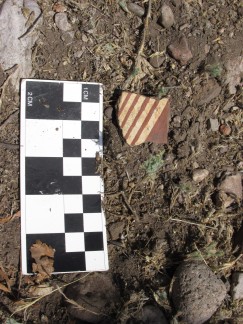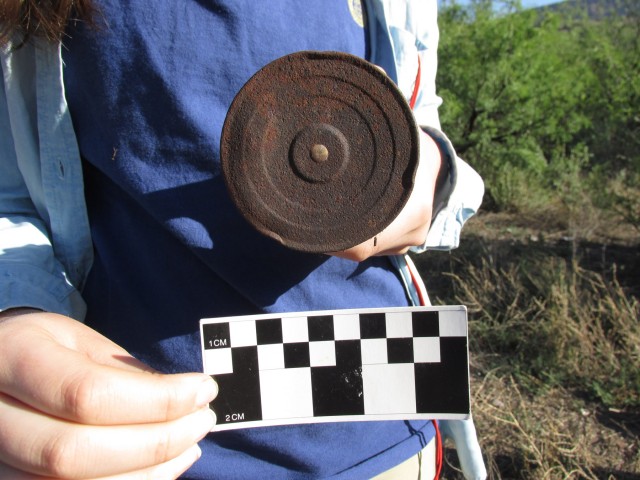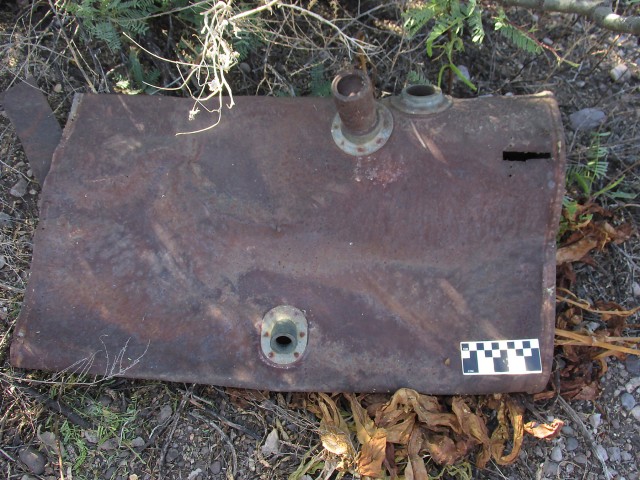- Home
- >
- Preservation Archaeology Blog
- >
- Leave-No-Trace Archaeology

Lexie Bennicas, University of Hawaii
(June 14, 2016)—When my turn at archaeological survey came, Evan led us past rattlesnakes and through thick brush into the valley of the Gila to a hill on the outskirts of the floodplain. Within minutes of approaching the hill we found artifacts ranging from ancient ceramic sherds to historic glass and rusted water heaters.
We did our best to survey and map the brushy area, and we found potential evidence of architecture and a dense scatter of artifacts. There was no doubt that this location was used by peoples of the past and might be a cool place to excavate, but we were able to get an idea of who was using the site and when without making any marks on the land or removing anything.
We found ceramic sherds in styles that could be dated using relative dating methods, including Three Circle Red-on-white, dating between to A.D. 750–950, and Classic Mimbres Black-on-white, dating to A.D. 1000–1150. We also found lithics (stone tools and debris from making them) manufactured from materials like chert and obsidian. These prehispanic artifacts tell us a little about who was using the site and what they were using it for.

We also found more recent artifacts, such as sun-dyed amethyst glass that dates prior to World War I and bottle styles that historically had specific uses as alcohol and medicine containers. Other pieces in the site assemblage included old roofing tiles and structural blocks, cans constructed using early- to mid-twentieth-century technologies, and a rusty outdated radiator. We concluded that people used the area during at least two archaeological time periods, and that people used it historically, as a dump site (due to the high density of historic trash).
Overall, the data we collected based on surface artifacts were enough to make the inferences necessary to get a general idea of the chronology and use of the area, without leaving any trace of our own on the site. I left feeling happy and optimistic knowing that digging up the past is not the only way to practice archaeology and form interpretations about the past.

Explore the News
-
Join Today
Keep up with the latest discoveries in southwestern archaeology. Join today, and receive Archaeology Southwest Magazine, among other member benefits.